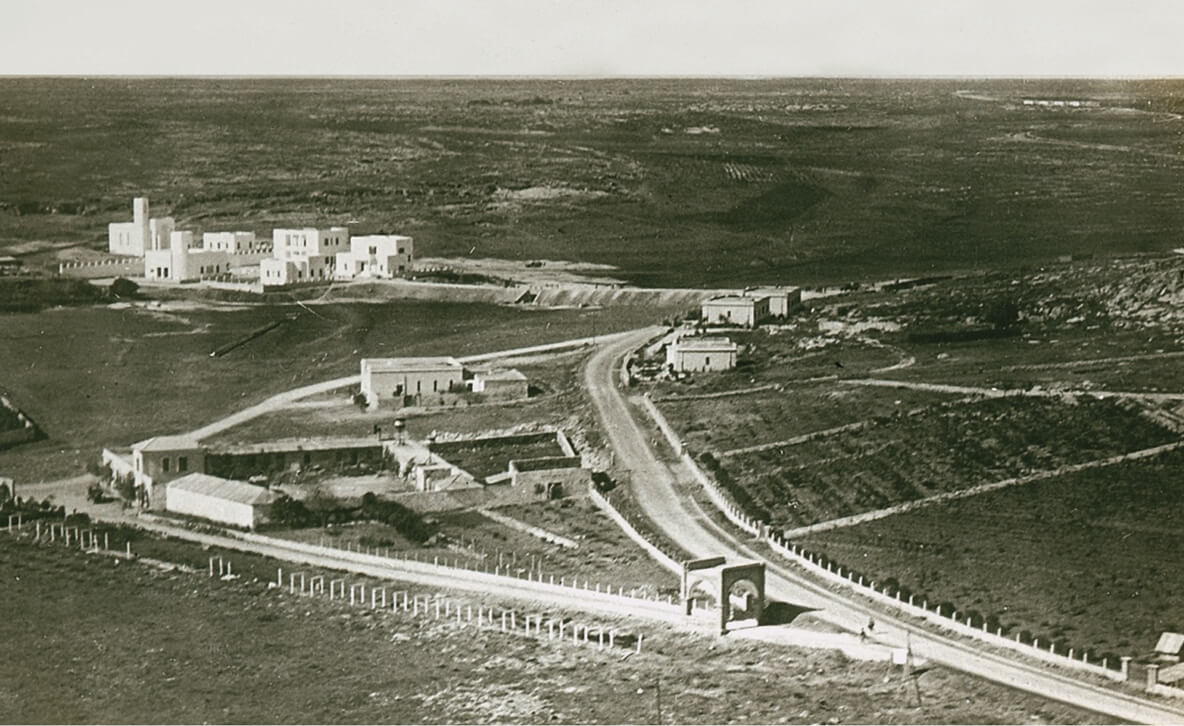Titanic in the Desert
Between the Libyan Sahara and the Naqab
Emilio Distretti
Beginning in the seventeenth century, colonialism materialized as a power capable of transforming “other” worlds, territories, and landscapes that it saw as empty lands. Since the nineteenth century, these have been categorized as terrae nullius, a legal designation that voided these areas of any intrinsic value and deprived the indigenous people of land titles as a step toward justifying the seizure of land. The perceived emptiness of the desert was a model for those conceptualizing terra nullius, presenting it as abandoned, uncultivated, and outside any economy. The desert was thus never only a physical reality but also occupied a central place in the formation of the colonial imagination.
The desert played an important imaginary role for two settler-colonial movements that emerged in the first part of the twentieth century—Italian Fascism, which sought to colonize the northern Libyan Sahara, and Zionism, in its quest to colonize the Naqab.

Across a few decades—between the 1930s and 1950s—Fascism and Zionism incubated colonial discourses and practices based on the desire to domesticate the desert and “make it bloom.” In both discourses, wild deserts were not simply a metaphor for wilderness but were understood to be the outcome of abandonment caused by the idleness and negligence of their current inhabitants. Each revolving around narratives and myths of return—the return of, and the return to, ancient glory and patrimony—both Fascism and Zionism justified their projects by taking the desert as their starting point. From a spatial point of view, the desert was understood as the tabula rasa where the imagination proliferates; from a historical-political point of view, it was seen as the degree zero of a new order. The nationalist myths respectively claim that the Italians were returning to the Libyan coasts, where the Roman Empire had previously flourished, while the Zionists claimed their return to Eretz Israel after centuries of exile. In these discourses, positioned as reactions to the carelessness of the deserts’ custodians, settling the terrain became synonymous with resurrection. Needless to say, the colonial imaginary disregarded and dismissed the presence of significant native populations in both deserts. The fulfillment of these latter-day colonialist dreams came, of course, at their expense.
Along the desert boundary that connected the archaeological sites of Leptis Magna, Sabratha, and the Arch of Marcus Aurelius in the center of Tripoli, the Italian nationalist discourse of the 1930s aspired to tie the Roman ruins, proof of the great ancient civilization, to the grand expectations of a future hegemonic Fascist empire. Archaeological investigations conducted by the Italians before and after their conquest had not only uncovered monuments, but also fossilized seeds and land-use infrastructure from Roman times such as canals and aqueducts, all of which were celebrated as a manifestation of ancient Roman agricultural expertise.